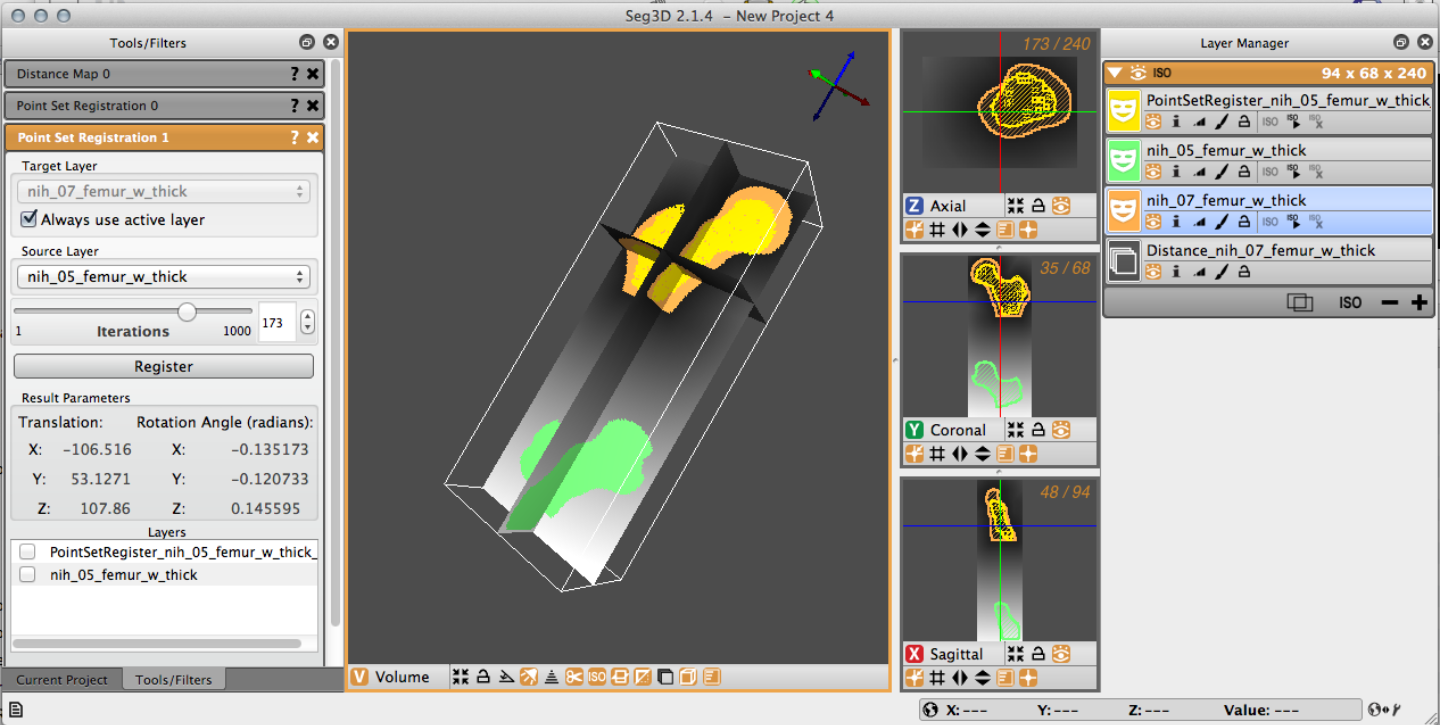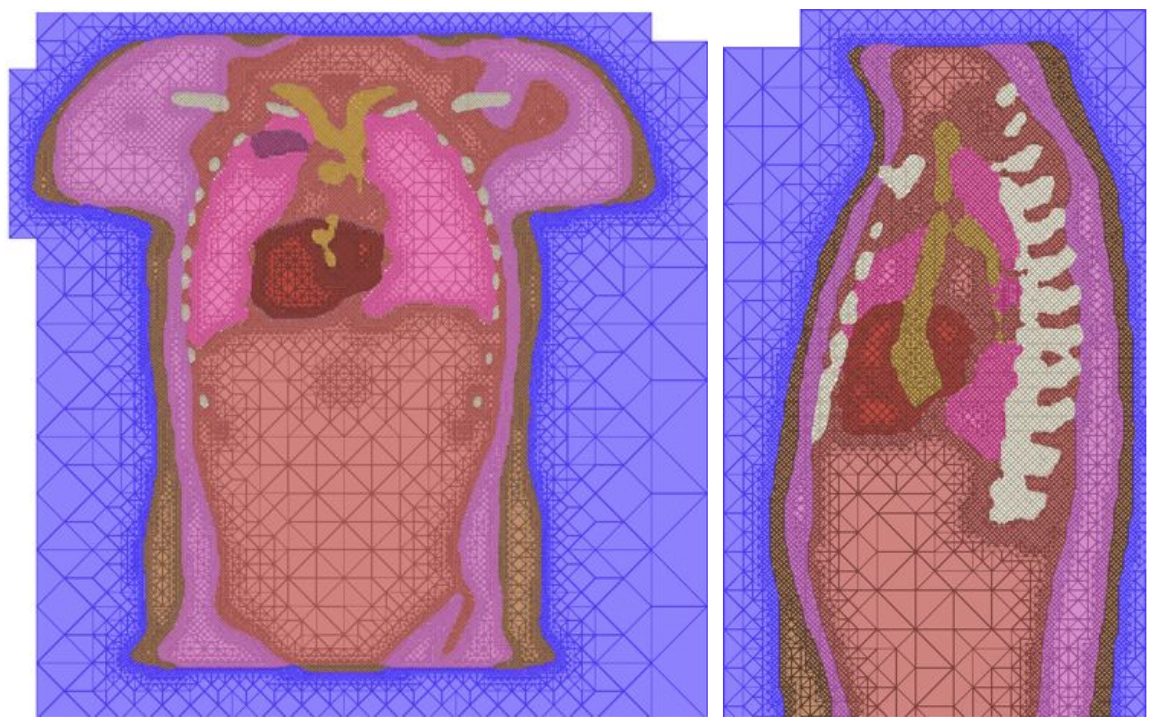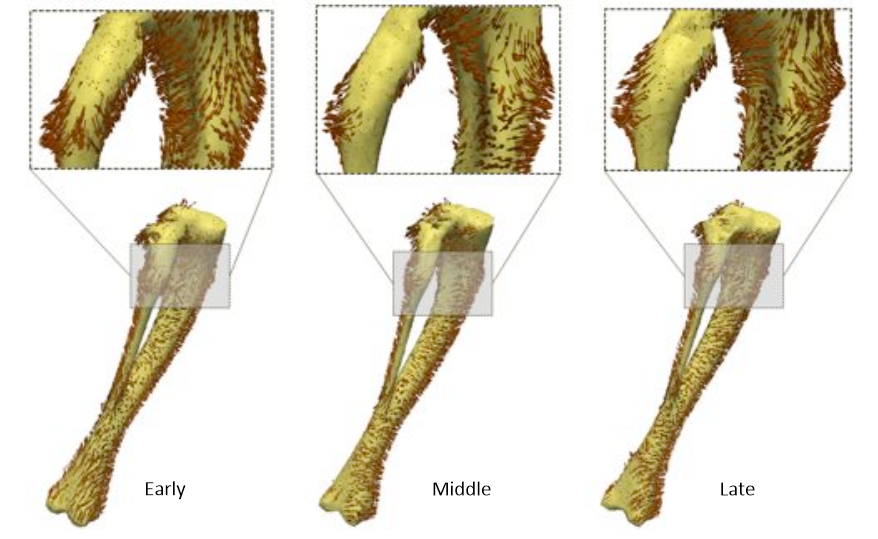The aims are designed to address specific technical needs that have been established by interactions with the driving biomedical projects (DBPs) and other collaborators in diverse scientific and clinical specialties. In these collaborations, the types of imaging data range from microscopy to MRI and CT, technical specialties range from engineering to clinical research, and clinical applications range from cardiology to orthopedics.
The Image and Geometric Analysis TRD invents new technologies in image and geometric analysis utilizing the considerable research expertise of the Investigators. This TRD also develops and releases an associated set of software tools. These tools include Seg3D for low-level image processing (left), Cleaver for multimaterial meshing (center), and ShapeWorks for statistical shape analysis (right). Together these tools have resulted in over 45,000 software downloads and have been cited by dozens of papers authored by laboratories not associated with the CIBC.
 |
 |
 |
| Seg3D, a software application developed in the Image and Geometric Analysis TRD, is used to segment, visualize, compute distance fields, and register femur data for a subsequent shape study. | An adaptive, tetrahedral mesh of a human torso generated in Cleaver for use in a simulation of a cardiac defibrillation. | ShapeWorks analysis used to produce visualizations of group differences in the tibia/fibula geometry, at different stages of development, between wild types and a knock-out mouse model for osteochondroma. |
